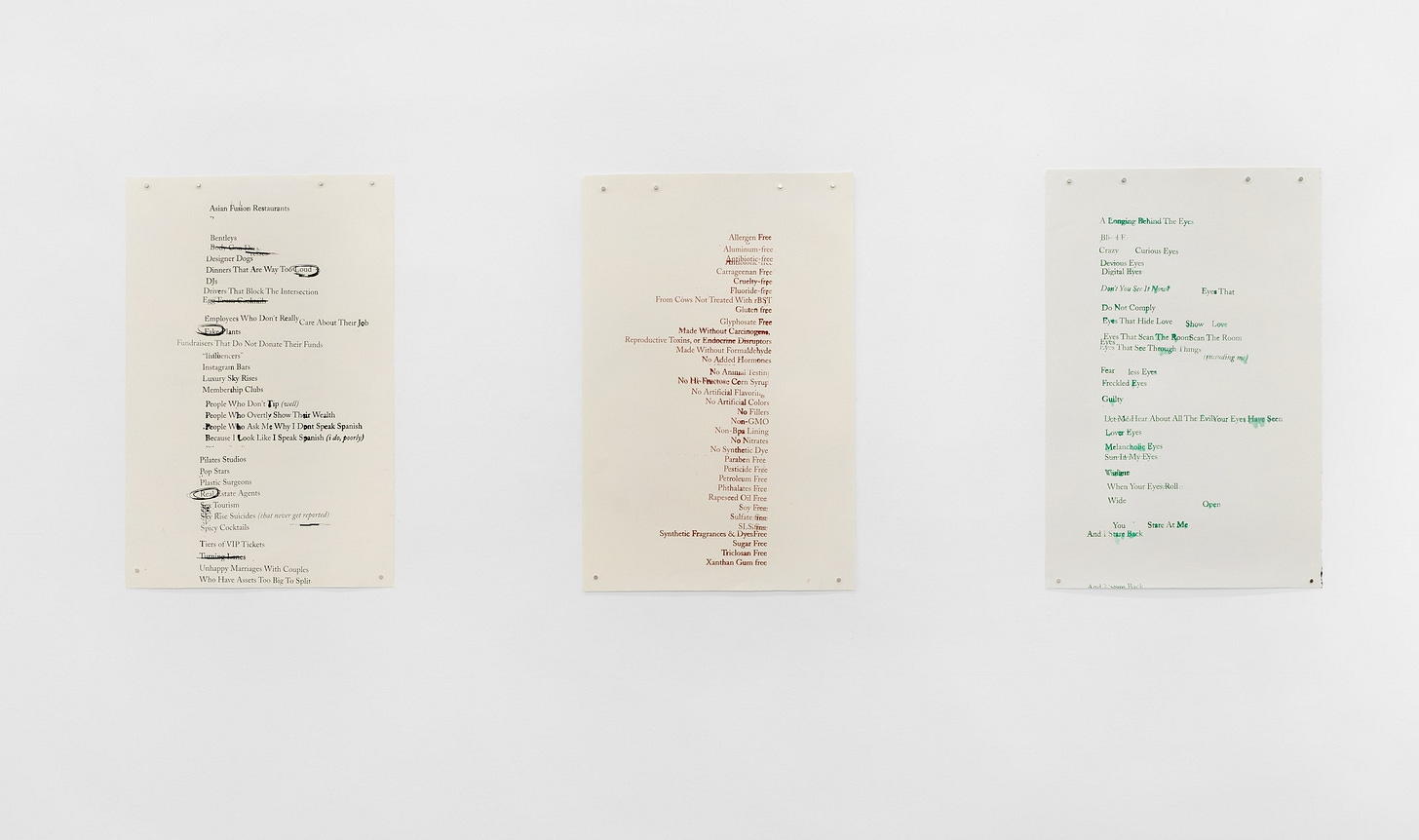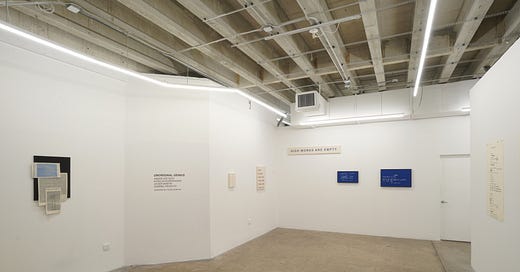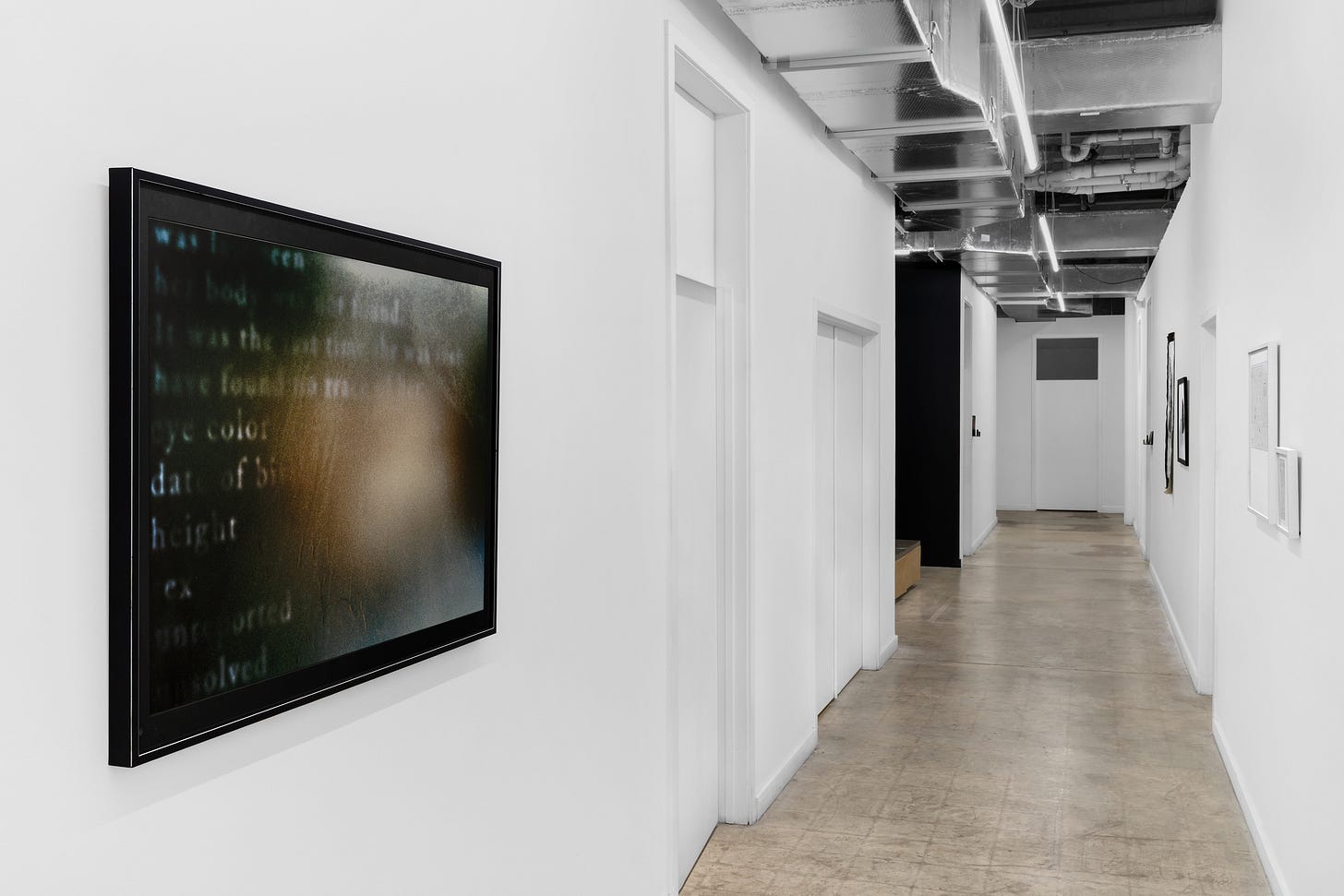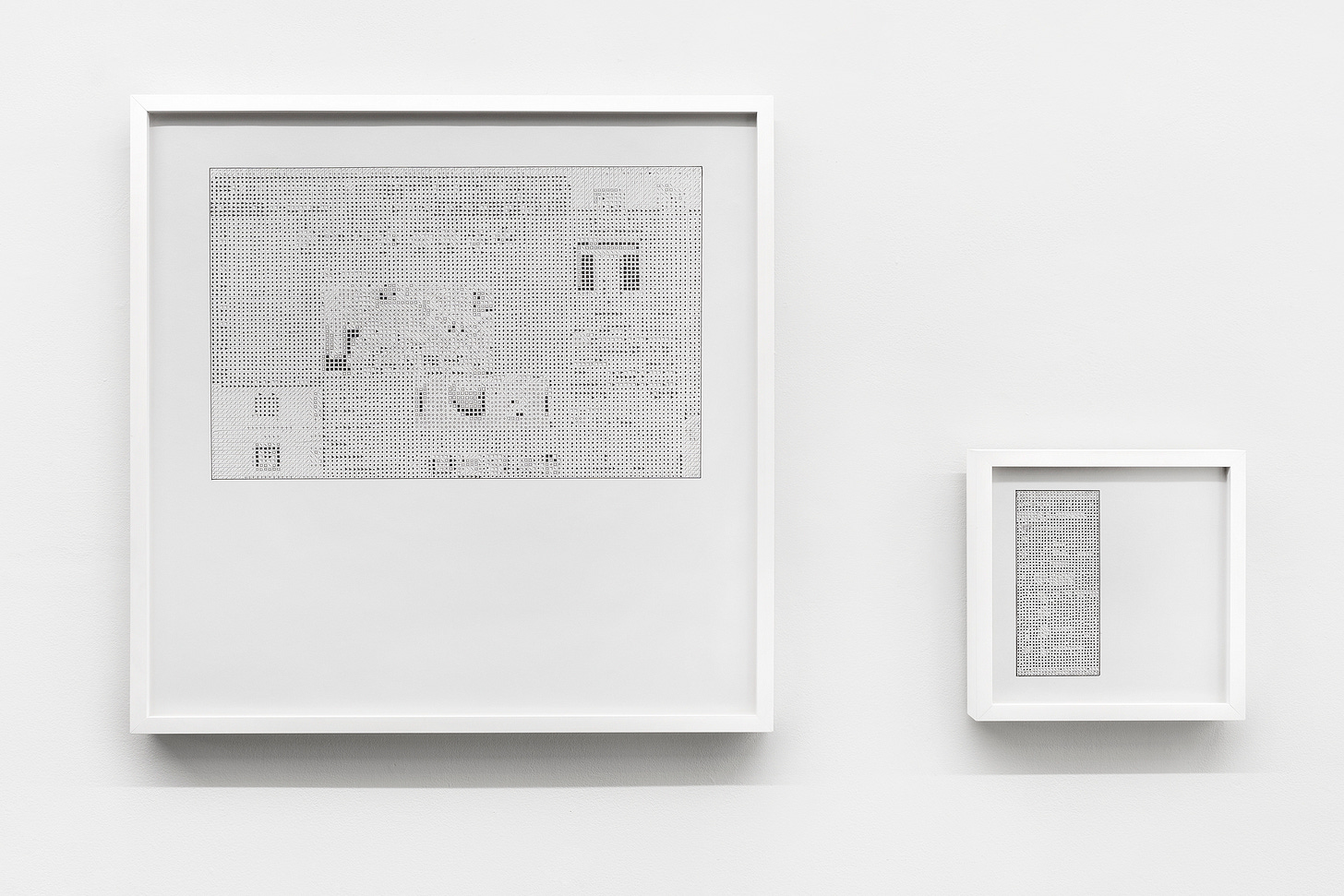Unoriginal Genius: Exploring Visual Poetics in Honor of Marjorie Perloff
Ross Karlan, Director of Art Muse
Unoriginal Genius is an exhibition I curated currently on view at Laundromat Art Space in Miami, FL to celebrate National Poetry Month. The show is an exploration of visual poetry and poetics, inspired by Marjorie Perloff’s 2010 book of the same name—celebrating its 15th anniversary—and marking one year since her passing.
Perloff argues that the idea of originality fades with the onset of the digital age and hyper-information. Instead, poets turn to citation, recycling, and other “unoriginal” means of expression. She uses both historical and contemporary examples, grounding her analysis in the works of Walter Benjamin and the Brazilian concrete poets and moving through the conceptual poetry of Kenneth Goldsmith, for example. She posits that poetry in our current age blurs the line between pure creation and curation of information, a tension these artists explore through tackling the concept of originality and the crisis of our digital world.
For example, the work of Brazilian artist André Azevedo and Spanish-born Javier Martín echo the historical foundations set by the concrete poets of the mid-20th century. Azevedo’s series titled “Poemas Gráficos,” for example, plays with language and space as two words are repeatedly typed down the raw cotton page using a typewriter. These words are semantic opposites and transcend languages, at least between English, Portuguese, and Spanish, and the typewriter as the artist’s medium stands in stark contrast to the digital age in which he works.

The typewriter fundamentally changed poetry, allowing words to break out visually from the conventional column in print. In a 2011 conversation at the University of Pennsylvania, Perloff recalls Hugh Kenner's book "The Mechanical Muse" which explores poetry's relationship with this technical change. Notably, Ezra Pound was among the first to experiment with visual placement and ideograms in poetry. Azevedo’s use of the typewriter not only pushes the limits of concrete poetry but also honors the mechanical roots of 20th-century poetics.
Similarly, Martin’s three paintings embody a purist concrete aesthetic. His work “ONLY ONLINE” is directly inspired by the concrete poets of the 20th century, where sounds and visuals guide the reader from one linguistic point to another. The significance or semantic meaning evokes an idea that what we find online is a lie — a critique of the digital sphere — but the linguistic and visual journey to get there holds greater value. “Horizon” similarly recalls traditional concrete aesthetics, subverting traditional semiotics between the signifier (the word “horizon”) and the signified (horizontality). “Horizon” forces viewers to turn their heads and change their perspective as the canvas no longer retains its original linguistic value. Finally, “High Words Are Empty” adds an additional factor in the physical exhibition of the work high above the standard gallery height. Martin, here, is inspired by the world of advertising and the overwhelming amount of information put high above us every day that, in reality, is empty of any substantial meaning.

While not precisely concrete, Miami-based Katelyn Kopenhaver’s screen-print series leans more toward Perloff’s notion of “curation of information.” The series is composed of loosely poetic lists, their alphabetical order belying a curated whole. In “Things Miami Does Not Need More Of” (2025), for example, Kopenhaver compiles a mere regurgitation of things that stereotypically make Miami life annoying. Each standalone item is inherently unoriginal, yet Kopenhaver’s genius lies the summation of these items as one cohesive entity.

"Open Secrets (The Unreported Unsolved)," presents reused language from unsolved missing persons cases and headlines about them. She calls attention to the words we read in the news but that often get overshadowed by the onslaught of media, advertising or other distractions. Her process calls to experimental poet Kenneth Goldsmith’s Day (2003). He claims the book was the result of what he called "uncreative writing" — retyping the front page of the New York Times word for word from the upper left to the lower right, every day. For both Goldsmith and Kopenhaver, a regurgitation of the news — or rather the language that makes up the news — is an uncreative, yet groundbreaking act of genius. Nevertheless, Kopenhaver's act forces us to reckon with a truth about our society that can no longer be shrouded in hyper-information or lost in a broader poetic mission.
Finally, São Paulo-based artist Gabriel Pessoto’s work exemplifies the crisis of poetics in the digital age head on. His textile series based on computer operating system error screens is based on the inherent poetic value of computer code and digital language. The artist weaves digital code into analogue craft, slowing the pace of hyper-information through needlepoint and embroidery. As such, Pessoto calls into question the digital nature of the subject with analogue methods of creation, blending the fast-paced state of hyper-information with slow and leisurely practices. Similarly in Pessoto’s drawings, he recycles cross-stitching patterns and symbols as a poetic language, translating one semiotic code as the basis of something visually beautiful and poetic.
As a whole the exhibition illustrates how these artists all accomplish, in a sense, Perloff’s idea of “poetry by other means” in the realm of visual arts especially; they portray an imaginative reuse and reinterpretation of past influences, objects, or ideas in ways that are dynamic. Azevedo, Kopenhaver, Martin, and Pessoto each exemplify the concept of an “unoriginal genius,” hovering the line between innovative creators and curators of ideas and influences.
Don’t miss our virtual talk on the exhibition tonight, April 15th, at 8:30 eastern / 5:30 Pacific. Register at artmusela.com






